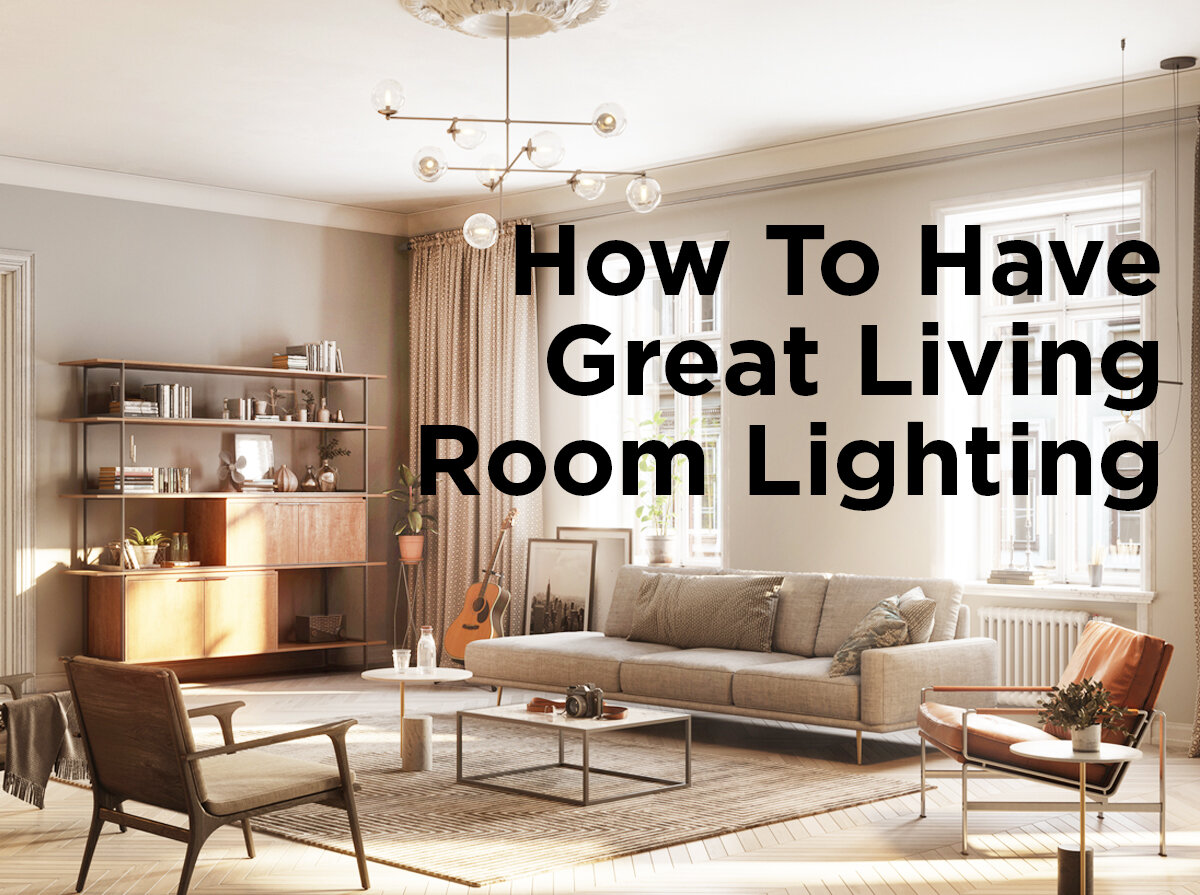5 Questions to Ask Yourself When Lighting a Room
Every room is different, so devising a unique lighting plan for each one is essential. Bathrooms have different lighting requirements than kitchens, which have still different requirements than living rooms or bedrooms. Moreover, certain fixtures or bulbs are more prominent in some rooms than others, and sometimes the warm/cool tones or angles of your lights will vary by room as well. To create a lighting scheme best suited for your room, you must start by evaluating your space and lighting needs. Ask yourself these five essential questions to make smarter choices when installing or updating your lights.
1. Are my Lights the Right Color Temperature?
Color temperature is perhaps the most important factor to examine when choosing the right lighting for a room. Generally, warm color temperatures are better suited for living rooms and bedrooms, and cooler color temperatures are typically used in bathrooms, studies and kitchens. The reasoning for this is that yellow-toned light creates a relaxed, comfortable ambience while white or blue-toned light encourages a more energetic environment with crisper color-rendering—factors that better complement the purposes of their recommended spaces.
However, this isn’t always the case. The color scheme of a room, such as the paint on the walls or the strong hues of large-scale furniture such as cabinets or built-in shelves, can also be a significant factor when deciding what color temperature you should use. If you have darker walls or furniture in your room, warmer color temperatures are more likely to intensify these tones, and vice versa. Our post on choosing lighting for paint colors covers this topic more thoroughly, but all in all the right color temperature for your space depends on what is most important to you – ambience, color-rendering, or the visual appeal of your room – so choose wisely.
2. Does my Lighting Have Layers?
Just as an interior designer layers colors or fabric, a lighting designer layers light to create well-balanced lighting schemes. The three layers of lighting design – ambient, task, and accent lighting – are essential for maintaining a room’s visual appeal and for practical purposes as well. Think about the role that each type of lighting plays. The ambient layer is general illumination, the task layer provides directional lighting for tasks, and the accent layer is more for decorative purposes such as backlighting or highlighting artwork and architectural features. In heavily trafficked rooms such as living rooms, kitchens, bedrooms and studies, it’s important to incorporate these layers with care. Though they may not be as important in smaller rooms like bathrooms or closets, there are still many ways to improve the lighting in these small spaces, too.
3. Do my Fixtures Match my Room’s Purpose and Style?
You should also consider your room’s light fixtures. Do they complement your room’s theme or design, or do they need an update? One instance in which you may want to consider a change is if you have a smaller room with larger light fixtures, as these fixtures may be taking up too much space and making your room feel cramped. In this case you’d want to opt for smaller, close-to-ceiling lights or recessed fixtures instead. Another instance is if you live in an older home, in which case your fixtures may be a little outdated. We carry a wide variety of light fixtures (and home décor elements that complement them) suited for any style, from rustic to contemporary. Feel free to browse for ideas!
4. Should my Lights be on a Dimmer?
Dimmers can do a lot for customizing a room’s look and feel. Being able to adjust your light level will ensure that your room is comfortably lit at any time of day. Dimmers also save energy, make bulbs last longer, and are easy to install. So how do you know if your room needs a dimmer?
Typically, the best rooms for dimmers are kitchens, dining rooms, living rooms and bedrooms because you spend the most amount of time in them. But dimmers in bathrooms or large, walk-in closets aren’t uncommon, either. Take a look at our post on choosing wall dimmers to pick the right one for your space. Keep in mind that LEDs, CFLs, halogens, and incandescent lights all come in dimmable options, but that doesn’t mean that ALL of them are made to be dimmed. Before you wire your lights up to a dimmer, make sure they specifically say that they are dimmable on the packaging.
5. Is Now the Right Time to Upgrade to Energy-Efficient Lights?
Any time is the right time to upgrade to more energy-efficient lights. However, for those who are hesitant to start switching over to LED lights, some ways are more advantageous to go about it than others. Our recent post on upgrading to LEDs details a few key strategies you should follow when choosing what lights to change out first. And even if you’re not ready for LEDs just yet, you can’t go wrong with CFLs, which still consume much less energy than incandescents and come at a low cost. Check out our post on the bright future of CFLs if you need further convincing.
Of course, there are many factors that come into play when choosing the lighting for a room. Other helpful posts include 10 Lighting Terms You Should Know, How to Light Your Home like a Designer, and The Dos and Don’ts of Choosing Light Fixtures. If you follow the tips above and educate yourself with a blog post or two, you are sure to be lighting your home like a pro before you know it! Do you have any questions or comments? Tell us your thoughts below or on Facebook, Twitter, LinkedIn, Instagram, or Pinterest!







